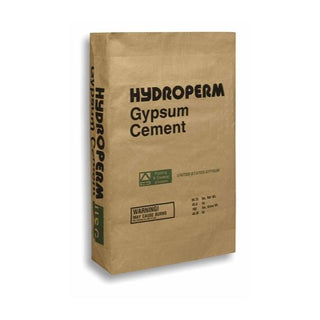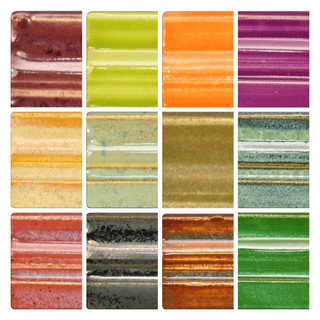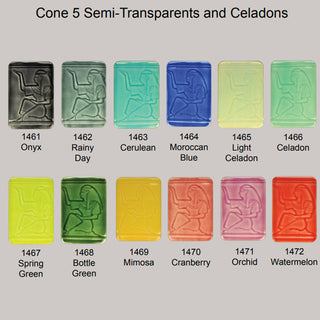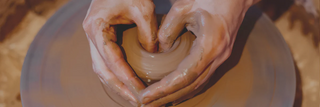U.S. Gypsum HYDROPERM 50 lbs. Bag
HYDROPERM gypsum plaster is a specially formulated product incorporating an air entraining agent to provide permeability. For producing permeable plaster molds for precision casting of many nonferrous metals and alloys.
Sealers and Parting Compounds
Parting compounds (also called “separators” or “releasers”) are needed to prevent adhesion of plaster or gypsum cement to
patterns or models. They also permit removal of plaster or gypsum cement from the surface of the pattern or model upon which
it “sets up.” Porous model materials require sealing prior to application of the parting compound.
Hydroperm Gypsum Plaster Sealing
All porous models, patterns and molds must be sealed before the parting agent is applied. Sealing is particularly essential for wood patterns to prevent dampness from causing the wood to swell, resulting in release difficulty. Gypsum cement plaster patterns also require sealing to prevent them from absorbing water from the plaster mix and causing the mix to adhere to the gypsum cement pattern. Patterns of metal, glass, plastic and other impervious materials normally do not require sealing.
A quick-drying lacquer applied by brush or spray gun is an excellent sealer for wood, plaster and gypsum-cement patterns
and master models. Two coats of lacquer provide more resistance to moisture than shellac. Correct procedure is to reduce lacquer with lacquer thinner so that the model or pattern readily absorbs the first coat. Apply second coat after first coat has thoroughly dried.Where a plaster or gypsum cement pattern is used, apply lacquer immediately after set.
Mahogany patterns or models require special treatment because gypsum cement plaster casts may adhere to undercuts caused by multiple pores or grain of the wood. A paste wood filler can be used to fill the grain of the wood, but should be reduced to a satisfactory brushing consistency with the recommended thinner. Apply a heavy coat of Hydroperm gypsum plaster and let it dull down; then wipe off excess by rubbing across the grain. After wood filler has set overnight, apply a coat of a clear acrylic sealer and allow to dry. Sand the pattern or model and apply several coats of a clear lacquer.
Separators Satisfactory separation agents must provide the following functions:
- Prevent adhesion to the gypsum cement plaster cast.
- Protect and lubricate pattern surface.
- Spread easily and uniformly in a thin, continuous insoluble film.
- Do not react destructively with the plaster or gypsum cement surface, or with the pattern.
Some of the most common and widely used separators are as follows:
Soaps—A number of special “potter’s” soaps are available for use as parting compounds. “Green soap” (a liquid) is an effective
parting compound when cut 10 to 1 with distilled water. Apply parting soap with a sponge and work into plaster surface. Several
coats may be required on a new mold. Remove excess soap with a clean wet sponge before pouring mold.
Stearic Acid and Kerosene (Stearine)—Formula: 1/4 lb. stearic acid shaved to flakes; 1 pt. kerosene. Melt stearic acid by warming: remove from heat source and add kerosene with constant stirring until a uniform mixture is obtained. Apply to pattern with a soft brush, preferably camel’s hair or sable hair. If brush marks show, thin mixture with more kerosene or by warming. This separator is one of the most widely used of all parting compounds and is particularly recommended for use with glue molds.
Petroleum Jelly (Vaseline)—Formula: 1 part petroleum jelly; 2 parts kerosene. Use petroleum jelly if it is cut back with approximately two parts kerosene to one of jelly. Blend mixture by carefully heating and thoroughly stirring (Caution—Fire Hazard).
Apply as a thin coat and brush out thoroughly.
For special purposes, separators other than the above may be advantageous:
Light Lubricating Oil—Use sparingly.
Light Mineral Oil—Particularly effective as a fine fog spray on metal patterns. Must be thinned to be effective.
Olive Oil—May be used if applied carefully while warm. Crisco and other similar hardened vegetable oils used as frying fats are
particularly recommended for use on lacquered wood.
Powered Mica—Has been found useful when finely ground and added to most parting compounds. Satisfactory results have
been obtained by adding 1/4 to 1/2 cup of the powdered mica to 1 qt. of parting compound solution.
EPOXICAL® Mold Sealer Separator—Works well as a release agent of gypsum cements. Thin EPOXICAL Mold Sealer Separator as it comes in the can, using white gasoline or kerosene at a ratio of 1-to-1 by volume. Apply a generous coat to the pattern: allow to dry 2 to 3 minutes and then wipe off excess with a soft cloth.
Removal of Gypsum Cement Plaster Cast
When gypsum cement plaster has set on a properly sealed and separated surface, the model can be removed by one or more of the following methods:
- Wedge evenly around surface with wedges or a sharp tool.
- Use compressed air gently to separate.
- Suspend piece so the weight of the mold, aided by light tapping, performs the separation.
- In extreme cases, soak the cast and its pattern in warm water for a short time. Then apply one or more of the above techniques.
Careful use of a compressed-air jet at a corner or convenient edge may be necessary to start release.
Casts should always be completely set before removal is attempted. When molds or patterns of most flexible molding compounds are used to form the gypsum cement, no separator is necessary and removal of the set object is simplified. An exception to this is the glue or gelatin mold, on which a parting compound must be used.
General Recommendations Efflorescence (a crusty appearance on the model surface) may result if models, patterns or molds are made of HYDROCAL® Brand A-11, HYDROCAL Brand B-11, ULTRACAL® -30 or other gypsum cements or plasters and are dried slowly under conditions of moderate or high relative humidity.
Patterns and models should be made hollow wherever possible to facilitate drying and minimize possibility of efflorescence.
When aluminum and magnesium patterns and molds are used in conjunction with HYDROCAL Brand A-11, HYDROCAL Brand
B-11 and HYDROSTONE® Cement, special care is necessary to prevent a metal-gypsum cement reaction. In these instances the
metal must be carefully painted with a thin coat of cut shellac or clear lacquer and a separator needs to be applied. Failure to
prevent contact between metal and gypsum cement will result in bubbles on the face of the HYDROCAL cast and a pitted surface
on the metal.
CUSTOMER REVIEWS - Q&A
Got a question about this product? Ask it here and get a response from our staff and also input from the Sheffield Pottery community!











